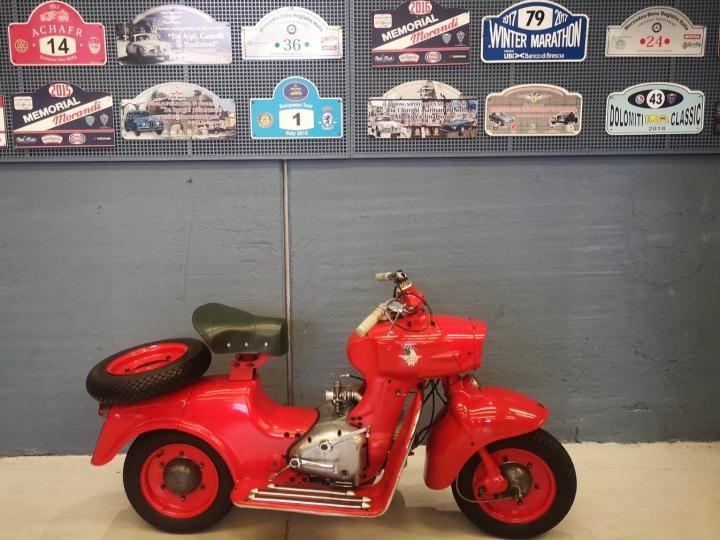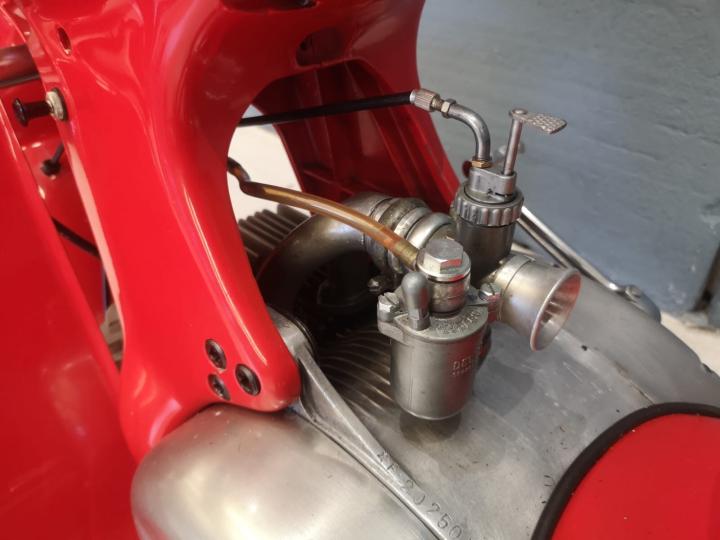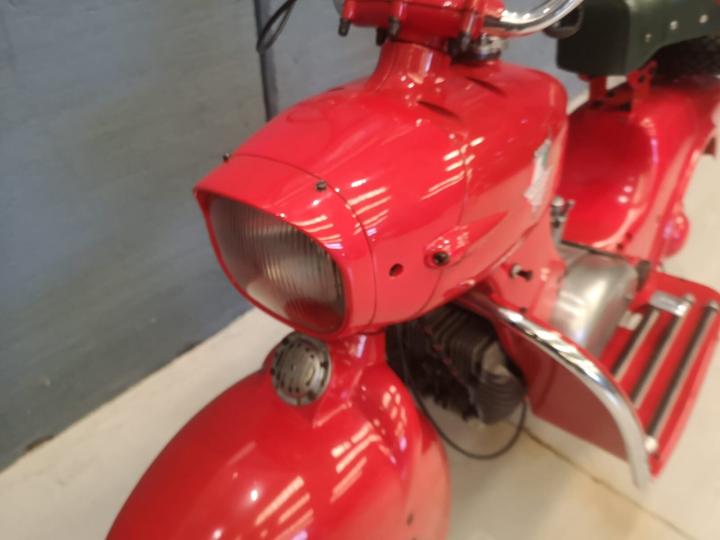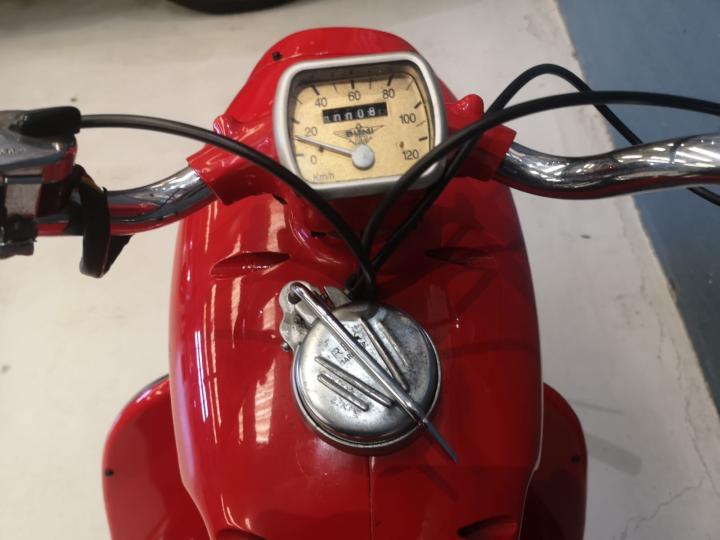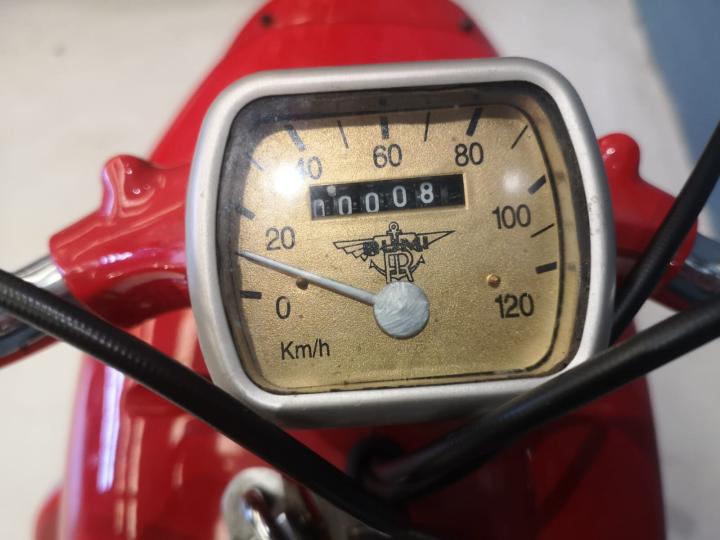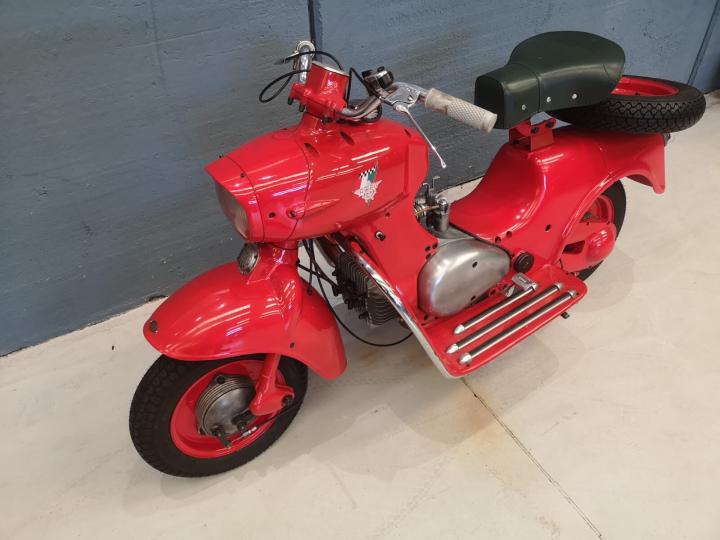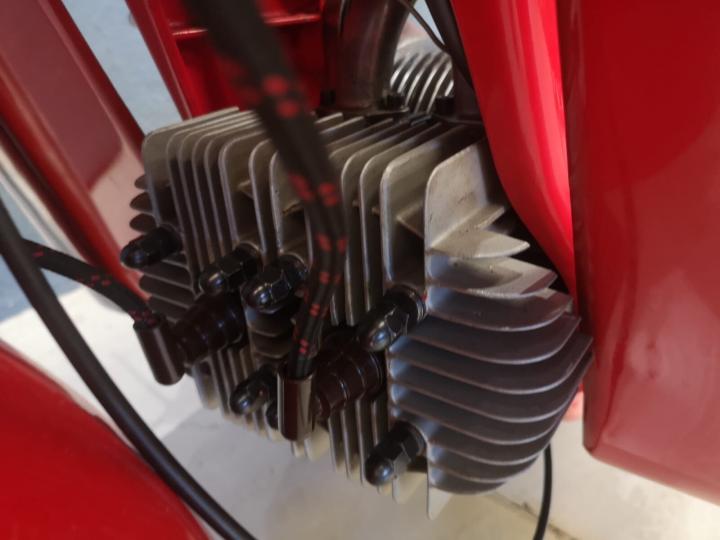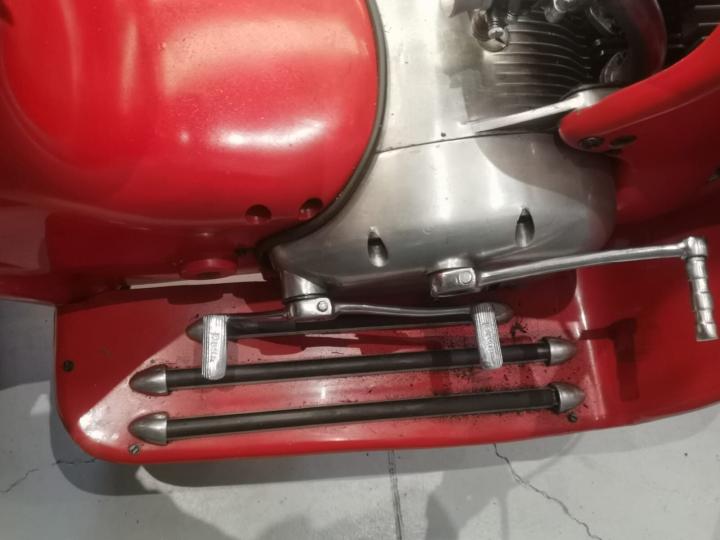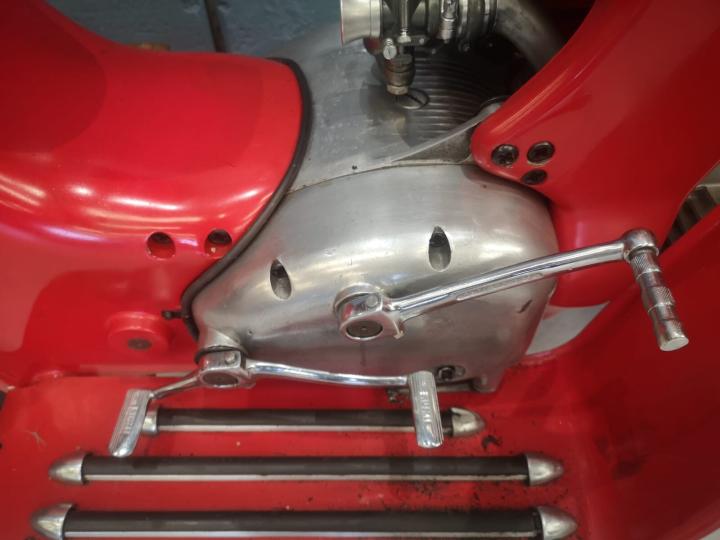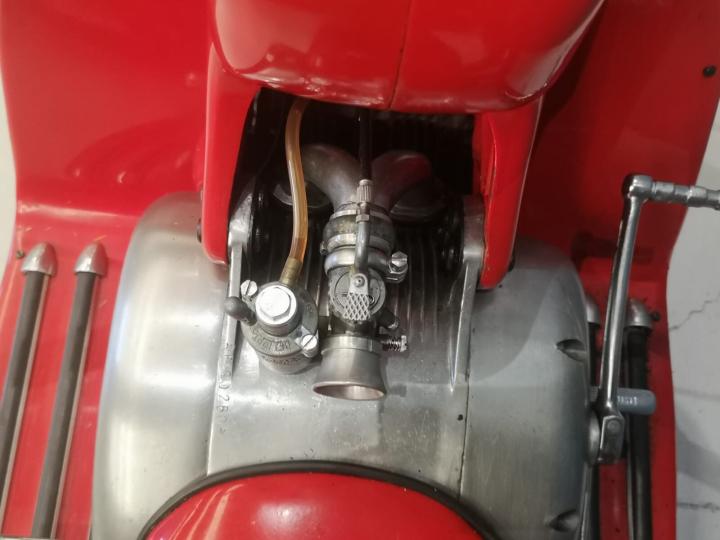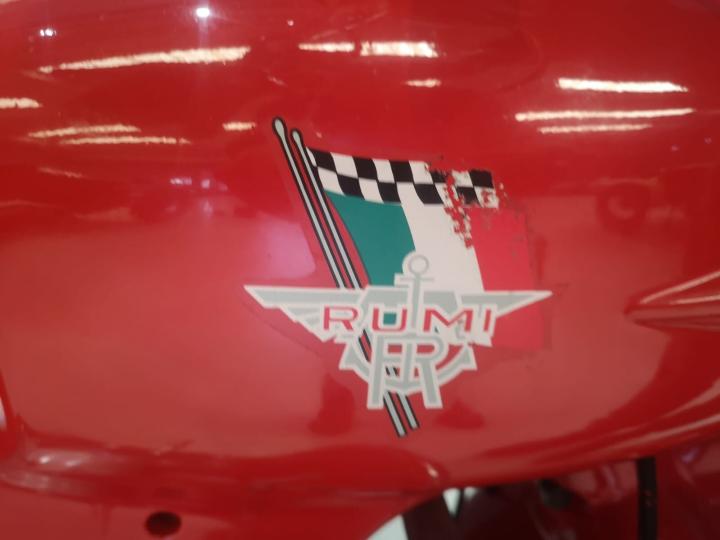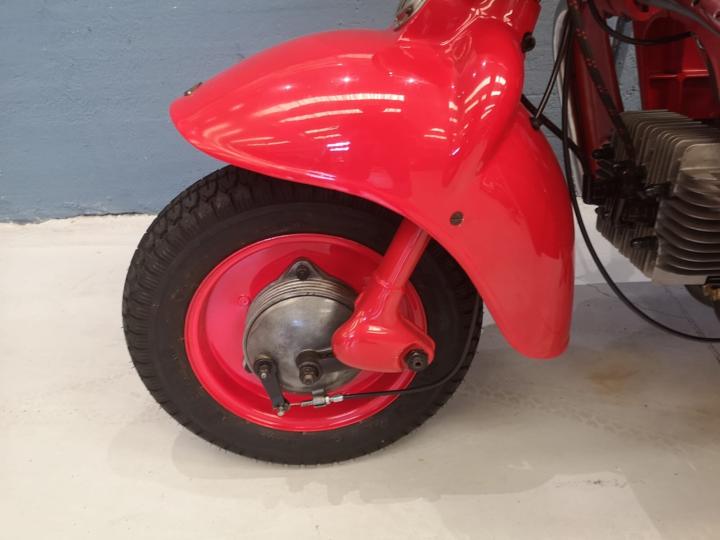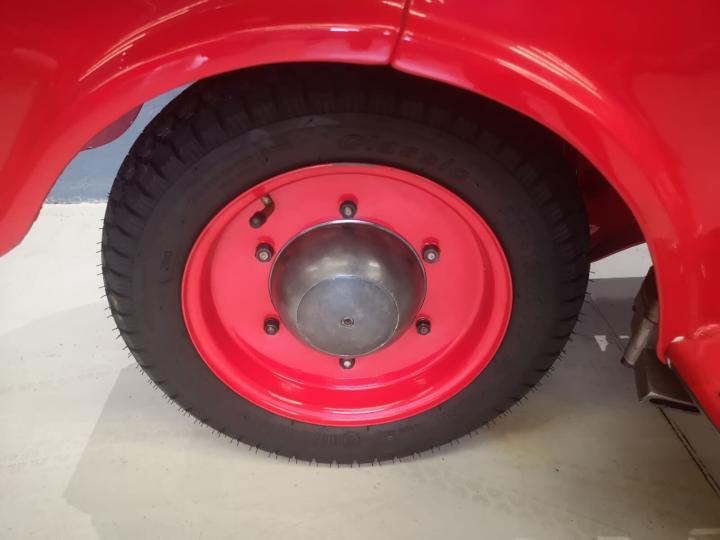1957 Moto-Rumi
Formichino Sport
€ 12800

|
Transmission
|
Manual
|

|
Exterior Color
|
Red
|
The Rumi Formichino Sport is one of the most iconic models produced by Rumi, an Italian manufacturer of motorcycles that made a significant mark in the history of racing motorcycles and mopeds, particularly during the 1950s and 1960s. Here is an overview of its historical and technical characteristics.
History of the Rumi Formichino Sport
The Rumi Formichino Sport was produced by F.lli Rumi S.p.A., founded in 1948 in Bergamo, Italy, and became famous as one of the most beloved scooters in Italy during the 1950s. The Rumi company initially produced motorcycles and mopeds, but the Formichino, which means “little ant” in Italian, stood out for its ability to combine practicality, lightness, and performance.
In 1950, Rumi launched the Formichino, but the Sport version was introduced a little later, in 1953. The Formichino Sport was a more powerful and sporty version of the standard moped, aimed at those looking for a vehicle that could serve both daily transportation needs and offer more dynamic use, even in amateur competitions.
Technical Characteristics of the Rumi Formichino Sport
Engine:
Type: Single-cylinder, two-stroke engine, air-cooled.
Displacement: 125 cc, making it more powerful than the standard 50 cc mopeds.
Power: The sport version produced about 5 hp, allowing the Formichino Sport to reach a top speed of around 85 km/h, which was quite high for a scooter of that time.
Transmission:
Type: Gearbox with 4-speed manual transmission. This set it apart from most mopeds of the period, which had automatic or variator transmissions.
Starting Mechanism: Manual start with a kick-start pedal, a typical feature for vehicles of that era.
Frame:
The Formichino Sport featured a light yet sturdy steel frame designed to offer stability and agility.
Its structure was designed for both everyday use and short road races, with geometry that allowed good maneuverability.
Suspension:
Coil spring suspension both front and rear, which allowed for a relatively comfortable ride over rough roads.
Brakes:
Drum brakes both front and rear, which were efficient for the type of vehicle, though less powerful than modern disc brakes.
Wheels:
17-inch wheels, a classic size for mopeds of the era. The wheel design contributed to stability and comfort while riding.
Design and Style:
The Formichino Sport had a distinctive style with compact lines and aerodynamic bodywork for the era. The fuel tank was typically made of metal with chrome finishes.
The overall form of the vehicle was practical yet stylish, embodying the typical scooter design of the 1950s in Italy.
Performance and Competitions
The Rumi Formichino Sport stood out for its performance, particularly in amateur competitions. Its combination of lightness, speed, and reliability made it a good choice for young motorcycle enthusiasts. The Formichino Sport could also compete in road races, demonstrating that a small moped could have impressive performance.
Rarity and Collectibility
Today, the Rumi Formichino Sport is highly sought after by vintage motorcycle collectors. Due to its limited production and the passage of time, the number of surviving units is low. As a result, its value in the collector’s market has risen significantly.
Cultural and Historical Impact
The Rumi Formichino Sport had a significant impact on Italian culture during the 1950s. In an era when private motoring was exploding in Italy, the Formichino Sport became a symbol of freedom for many young people and adults looking for an affordable yet fun and high-performing means of transportation. It was, for many, the “first bike” that allowed entry into the world of motorcycles with a vehicle that also had a certain prestige.
Collecting the Rumi Formichino Sport
For vintage motorcycle collectors, the Rumi Formichino Sport is a piece of history that offers an opportunity to participate in historical motorcycle events, rallies, and vintage vehicle competitions. Restoring a Formichino Sport may require meticulous work, but the end result is a bike that retains all the charm of the 1950s.
